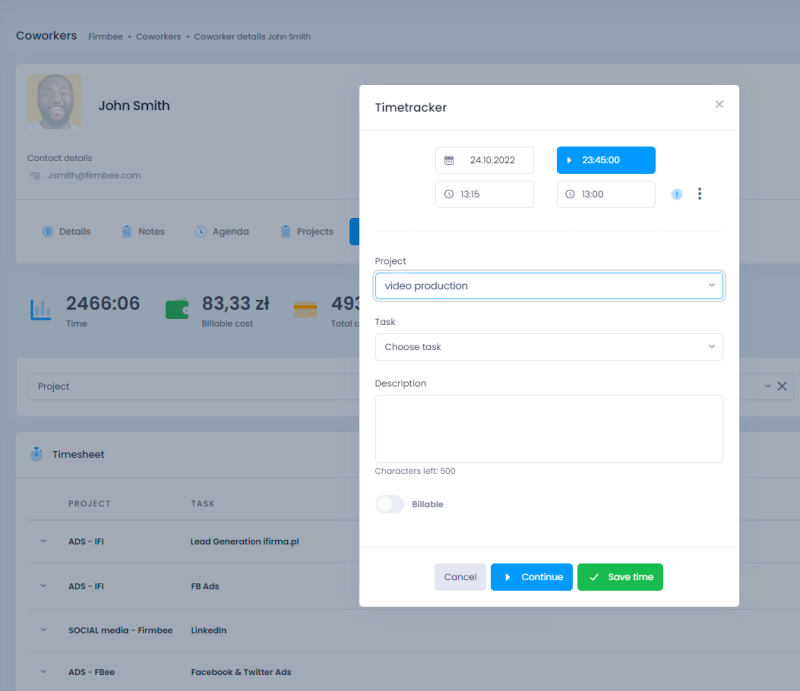Estimating the time needed to perform a specific activity is one of the essential elements of a better organization of our lives – both at work and at home (e.g., for household chores). Many people have reservations about this technique, as they believe that in most cases it is simply impossible to accurately estimate the time needed due to dependence on too many external factors. However, there are ways in which we can better carry out this process, which can be crucial, for example, when creating a project schedule. We present them to you below.
4 steps to estimate time – table of contents:
- Step 1: List all the necessary activities
- Step 2: Recall past experiences
- Step 3: Anticipate
- Step 4: Track your progress
- Summary
Step 1: List all the necessary activities
In order to properly estimate working time, it is not enough to simply write down a list of tasks and specify the number of hours needed to complete them. It is important to indicate for each task a comprehensive list of activities that will be performed as part of its completion.
Then, you will notice which activities you will be able to do on your own, when you will have to consult with other people (and adjust to their time schedules or wait for approval from them), and which activity will require you to devote more time (for example, creative tasks). Thus, when creating a project timeline you need to take into account both your and other people’s deadlines.

Step 2: Recall past experiences
It’s always good to learn from mistakes – both your own and other people’s – so as a next step, ask yourself whether you have carried out similar activities in the past and how much time it took you to do them, and then draw conclusions. If you haven’t dealt with such a task yourself, then ask your team members – there may be someone in your team who has done this type of activity before and will be able to give you a hint as to how long it should take you to complete it. Remember, it’s always better to ask than to regret that you didn’t take the advice.
When preparing the project timeline, it is a good idea to organize a meeting of all team members and make estimates together. A mixture of different skills and experiences will certainly allow you to achieve better results.
Step 3: Anticipate
Have you estimated the time required to complete all the steps of a single task? Great – now extend that time by, for example, 10-20% (depending on the type of a task) to allow room for the unexpected (especially if, after the first step, you already know that you will depend on other people).
Sick leaves, scheduled and unscheduled vacations, delays in deliveries, consultations or tests are just basic examples of situations that can affect our activities, significantly prolonging their execution. However, they are an invariable part of business, so you need to be prepared for them, anticipating the necessary time. If nothing happens, you will simply complete the task earlier than expected – and everyone will be happy with that.

Step 4: Track your progress
The last mentioned step is important because it allows you to fully control the situation, thus reducing the risk of bottlenecks and inability to respond to them. It is for this reason that, once you have made an estimate of the time needed for a given task, you should regularly compare the actual schedule with the predictions you have prepared in advance.
In this way, you may discover the reasons why the estimates do not correspond to reality and draw conclusions that you will use for your next task. You can track the progress of a project, for example, by using special applications designed to measure time, or by using project management software – such as Firmbee.
Summary
Appropriate estimation of the time required for specific tasks is essential to maximize the productivity of each individual employee, but also to ensure that the project is completed according to the agreed schedule. The use of the methods outlined above, along with constant monitoring of the activities being carried out (tracking compliance with the objectives, checking for bottlenecks and making modifications as necessary), is the requisite for success of the project.
Read also:Is a project management tool really necessary in your organization?
If you like our content, join our busy bees community on Facebook, Twitter, LinkedIn, Instagram, YouTube, Pinterest, TikTok.
Author: Caroline Becker
As a Project Manager, Caroline is an expert in finding new methods to design the best workflows and optimize processes. Her organizational skills and ability to work under time pressure make her the best person to turn complicated projects into reality.


















